-
Car Reviews
- Car News
-
Car Comparisons
Latest comparisons
- Chasing Deals
Back with a bold exterior and a premium-feeling cabin, the Nissan X-Trail looks to take the fight to the popular Toyota RAV4
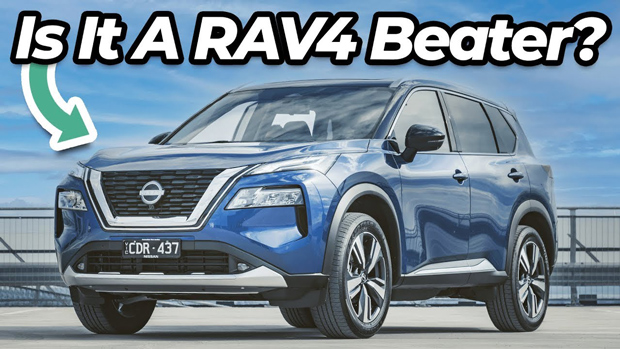
As the fourth-biggest market for Nissan’s X-Trail, it’s little surprise to see the midsize SUV return to Australia in its fourth generation. Once marketed as a rugged, off-road-ready SUV, it seems that Nissan is targeting a more upmarket buyer these days, with a far more premium-feeling vehicle than ever before.
Nissan Australia has confirmed that this new X-Trail will be sold in four variants in Australia, starting with the ST at $36,750 before on-road costs. The range continues through with the ST-L, TI, and the Ti-L at $43,190, $49,990, and $52,990 respectively.
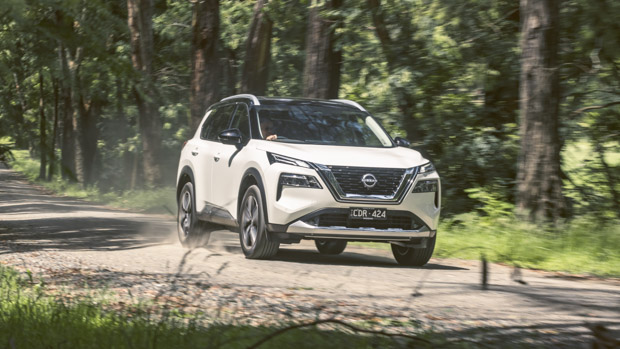
All-wheel drive comes standard in the Ti and Ti-L at the top of the range, but comes at a $3000 premium on ST and ST-L models.
Those interested in the hybrid option, Nissan’s e-Power drivetrain, will have to wait until early next year and will pay a slightly higher premium.
Opting for all-wheel drive in the ST and ST-L also adds a third row of seating, turning it into a seven-seater. However, third-row seating isn’t an option on the range-topping Ti and Ti-L variants.
As standard, every X-Trail above the ST comes finished in ‘Scarlett Ember”, while opting for any other colour will incur a premium paint charge of $700. Along the same lines, a black roof is available on the range-topping Ti and Ti-L variants for an extra $500 again.
With an impressive new interior, and a powertrain that “brings the most value to the customer”, Nissan Australia is hoping to take the fight to the likes of the Toyota RAV4, Kia Sportage and Hyundai Tucson in the midsize SUV segment.
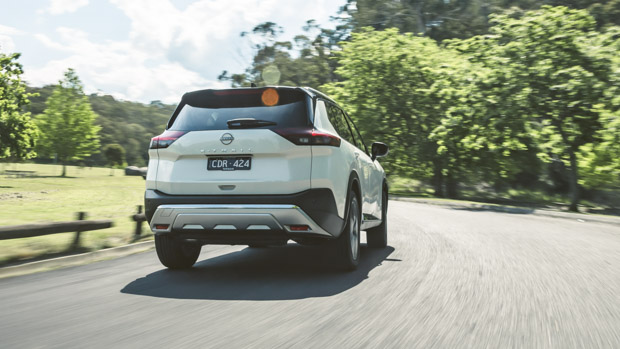
Like the last-generation X-Trail, this new one is powered by a naturally aspirated 2.5-litre petrol engine. Despite the similarities, Nissan claims that this is an “all-new engine”, which lifts power and torque levels to 135kW and 244Nm, from 126kW and 226Nm in the previous-generation.
This engine is paired with a Continuously Variable Transmission (CVT) and sends power either through the front wheels or all four wheels depending on the model.
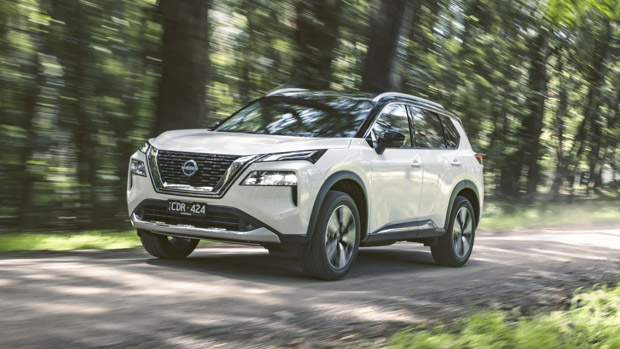
While the power and torque levels feel adequate for an SUV of this size, the engine and transmission pairing feels a little dated in 2022.
Due to the naturally aspirated nature of the engine, it can feel sluggish at times, and revving through the range doesn’t reward drivers with any significant shunt.
The transmission follows a similar theme, but is somewhat redeemed by the fact that it mimics having gear ratio steps.
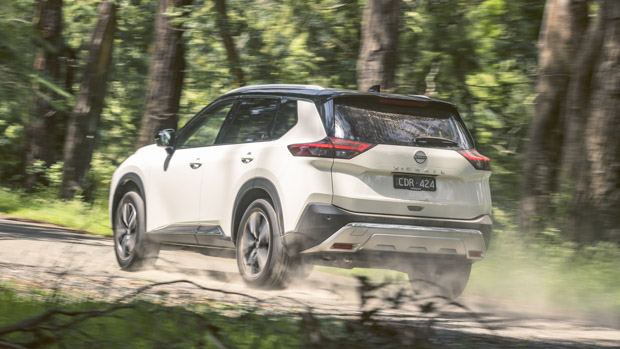
It also gets paddle shifters mounted behind the steering wheel, and although they feel somewhat redundant when paired with a single-speed transmission, the faux steps provide a manual shifting sensation.
Nissan Australia has also confirmed to Chasing Cars that it will not be offering its 1.5-litre turbo-petrol three-cylinder in Australia in non hybrid applications, with the smaller engine offering outputs of 149kW and 305Nm in the US market.
In terms of performance, Nissan hasn’t provided a 0-100km/h figure, and Chasing Cars hasn’t yet had a chance to test it yet. In saying this, I’d be surprised to see the X-Trail complete the sprint in anything less than 10 seconds, as it doesn’t feel overly brisk in normal driving conditions.
For context, the X-Trail e-Power manages a seven-second flat 0-100km/h sprint, and the regular petrol-powered SUV feels like it’s quite a bit slower by the seat of the pants.
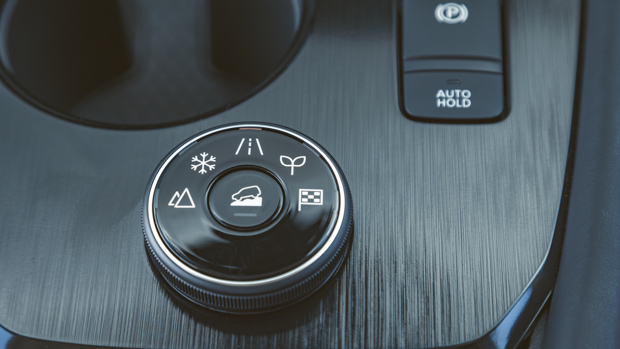
As standard, the X-Trail has three driving modes; eco, normal and sport, and this is increased to five in the Ti and Ti-L, adding Snow and Off-road.
In terms of response, the eco mode seems to be more limited and the transmission isn’t as rev-happy as in sport, where acceleration is a little snappier, and the transmission will rev out further.
As the Nissan rides on fixed dampers, the ride and handling doesn’t change between these modes.
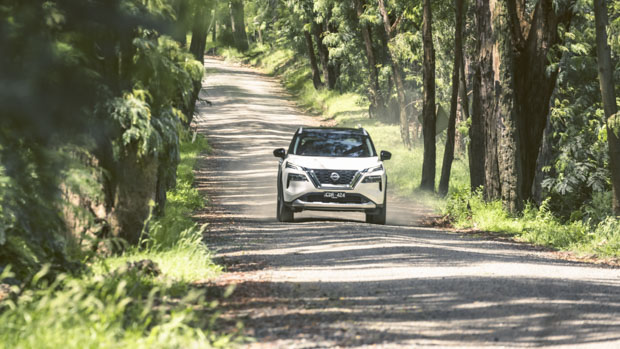
The ride offered by the new X-Trail is nice, inoffensive, and exactly what you’d expect from a mid-range family-friendly SUV. For the most part, the X-Trail rides really well, and although it isn’t soft, it handles most roads with ease.
Bumpier back roads and unsealed surfaces are where the holes in this ride start to appear, with some translating to nasty bumps in the cabin.
Opting for the entry-level ST on 17-inch wheels, or even the ST-L on 18s, somewhat mitigates this problem, but then it’s a trade-off with other luxuries in the cabin.
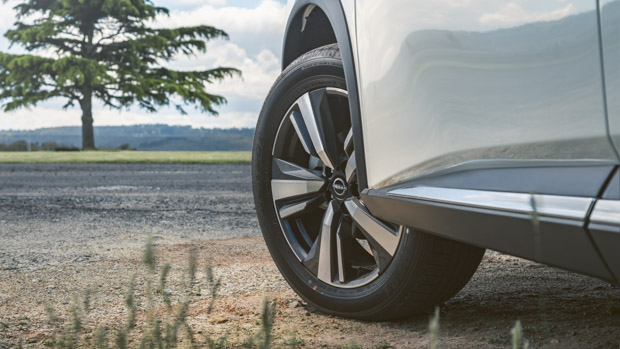
Considering that this new X-Trail is built on the CMF-C platform that’s shared with the Mitsubishi Outlander, it comes as little surprise to find that the Nissan is rather athletic in the corners.
There’s no denying that it’s a SUV that weighs 1.6-tonnes, but the X-Trail’s chassis does a decent job at disguising this.
The steering has a nice firm feeling to it and although switching it into sport mode increases this, I found myself using normal mode more often than not as I preferred the lighter feel. Although road feedback is minimal, this can be excused for the remarkably accurate steering system.
As standard, Nissan’s Pro Pilot safety suite is standard across the majority of the X-Trail range. The only exception to this being the ST, which misses out on the surrounding area monitoring system.
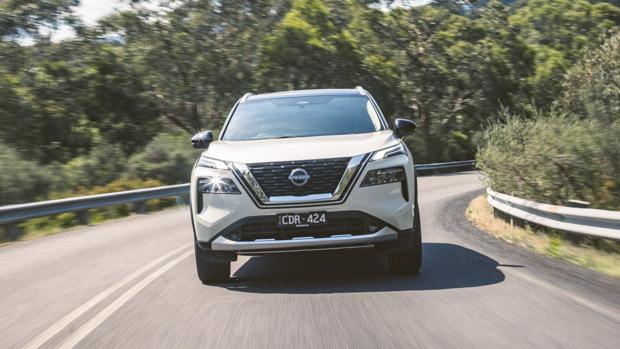
Despite this, the entire range benefits from advanced systems such as lane-keep assist, forward collision warning, and blind spot monitoring. Adaptive cruise control is also standard across the range, and I found the speed limit assist system functionality to be particularly helpful.
My one complaint when it comes to Nissan’s Pro Pilot suite is that it lacks a little refinement within the active systems.
An example of this is the lane-keep assist system that seems to be far too set on the lines directly beneath the car as opposed to where the road is heading. The steering assistance seems overly eager to cut in, to the point that I felt more comfortable driving without it.
For me, the interior was the real highlight of this new X-Trail, as it genuinely feels like a luxury vehicle.
From top to bottom there’s a real premium charm about it that makes the X-Trail feel like it should command a heftier price tag. And the premium sense is conveyed through soft-touch materials on the majority of panels, which is contrasted by black woodgrain paneling.
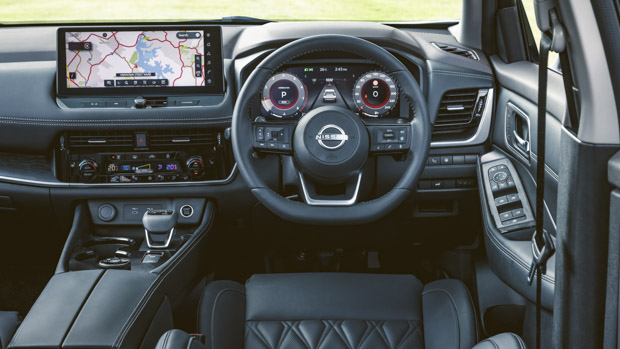
While lower-grade models make do with a blend of cloth, artificial leather and genuine leather upholstery, the range-topping Ti-L gets black Nappa leather seats. Not only are these seats extremely comfortable, but both front seats also feature power adjustment.
Cabin technology is another element that contributes to this premium feeling, with a large 12.3-inch infotainment display taking pride of place in the centre of the dash. In comparison to the Toyota system in the RAV4, this screen feels year ahead in terms of development.
The multimedia screen resolution is crystal clear, the operating system is very intuitive to use, and satellite navigation is standard on the Ti and Ti-L models. It’s worth noting that the ST and ST-L get a smaller 8.0-inch screen, but this still uses the same operating system.
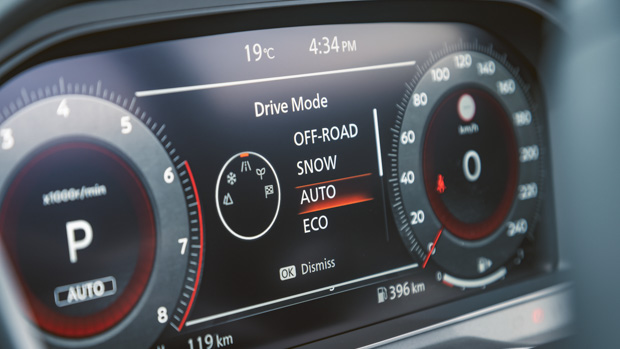
Wired Apple Carplay and Android Auto comes as standard across the range, but this is upgraded to wireless Apple Carplay in the Ti and Ti-L. The same goes for the wireless phone charger that’s only available in the top models.
Behind the multifunction steering wheel (with tactile buttons) the X-Trail Ti-L gets a 12.3-inch digital cluster and a 10.8-inch head up display. Though neither display offers much in the way of adjustability, they are extremely easy to use.
In the second row of the X-Trail, there’s no shortage of head or leg room. And while the transmission tunnel is slightly raised, it barely impedes leg room in the middle seat.
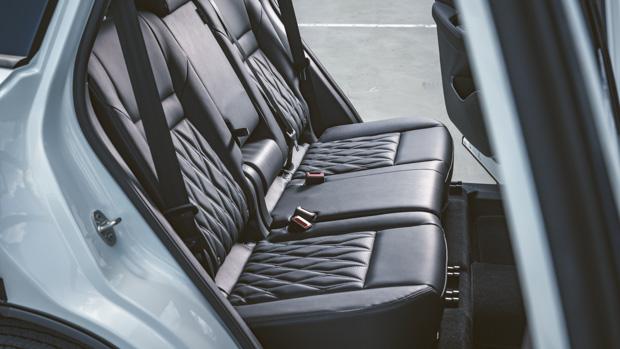
The tilt and slide seat is another great feature of the X-Trail, as it means that either leg room or luggage space can be increased at any point.
Second row air vents come as standard across the entire range, but it’s only the Ti and Ti-L that get tri-zone climate control with temperature and fan control on the back of the centre console.
In terms of luggage space, the X-Trail offers 585 litres of space with the second row in place on five-seater models. This drops to 465 litres for the seven-seaters. Beneath the boot sits a spare wheel, and it’s also worth noting that the X-Trail is rated to a maximum braked-towing capacity of 2.0-tonnes.
Nissan claims a fuel economy of 7.8L/100km in the X-Trail models with all-wheel drive. During the launch, we managed to better this claim, and ended up with an average figure of 7.5L/100km.
This is perfectly on par with the Toyota RAV4 Edge, which uses the same sized petrol engine and a fairly similar powertrain format.
In terms of servicing, Nissan offers a six-year capped price plan for the X-Trail that costs $3056 in total. Service intervals are every 10,000km/12 months.
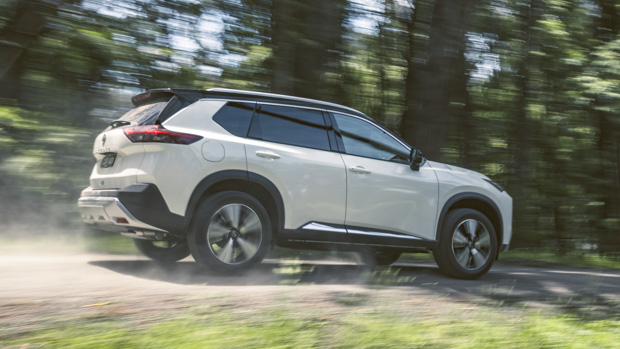
In comparison to the Toyota RAV4 Edge, this is significantly more expensive, as Toyota’s capped price five-year plan costs just $1150, and covers the Toyota for longer 15,000km intervals.
On average, customers would pay $230 per service over five years to service the RAV4, whereas X-Trail owners will pay $472.
On the warranty front, the X-Trail is covered by Nissan Australia’s five-year/unlimited-kilometre plan.
There’s no denying that Nissan has given Australian buyers a reason to look at the X-Trail over its competitors in the ever-growing mid-sized SUV segment.
I’d say that the biggest drawcard of the X-Trail is its new interior, with its plethora of soft-touch materials and large displays.
Though the engine and CVT pairing feels a little unrefined against its rivals in modern times, this likely won’t be a dealbreaker for most, as it’s easy enough to live with. Average fuel economy and reasonably steep service costs will likely be a bigger issue for most.
Key specs (as tested)
About Chasing cars
Chasing Cars reviews are 100% independent.
Because we are powered by Budget Direct Insurance, we don’t receive advertising or sales revenue from car manufacturers.
We’re truly independent – giving you Australia’s best car reviews.
The estimate provided does not take into account your personal circumstances but is intended to give a general indication of the cost of insurance, in order to obtain a complete quote, please visit www.budgetdirect.com.au. Estimate includes 15%^ online discount.
^Conditions Apply
Budget Direct Insurance arranged by Auto & General Services Pty Ltd ACN 003 617 909(AGS) AFSL 241 411, for and on behalf of the insurer, Auto & General Insurance Company Limited(ABN 42 111 586 353, AFSL 285 571).Because we don’t know your financial needs, we can’t advise you if this insurance will suit you. You should consider your needs and the Product Disclosure Statement before making a decision to buy insurance. Terms and conditions apply.
Indicative quote based on assumptions including postcode , 40 year old male with no offences, licence suspensions or claims in the last 5 years, a NCD Rating 1 and no younger drivers listed. White car, driven up to 10,000kms a year, unfinanced, with no modifications, factory options and/or non-standard accessories, private use only and garaged at night.
^Online Discounts Terms & Conditions
1. Discounts apply to the premium paid for a new Budget Direct Gold Comprehensive Car Insurance, Third Party Property Only or Third Party Property, Fire & Theft Insurance policy initiated online on or after 29 March 2017. Discounts do not apply to optional Roadside Assistance.
2. Discounts do not apply to any renewal offer of insurance.
3. Discounts only apply to the insurance portion of the premium. Discounts are applied before government charges, taxes, levies and fees, including instalment processing fees (as applicable). The full extent of discounts may therefore be impacted.
4. We reserve the right to change the offer without notice.